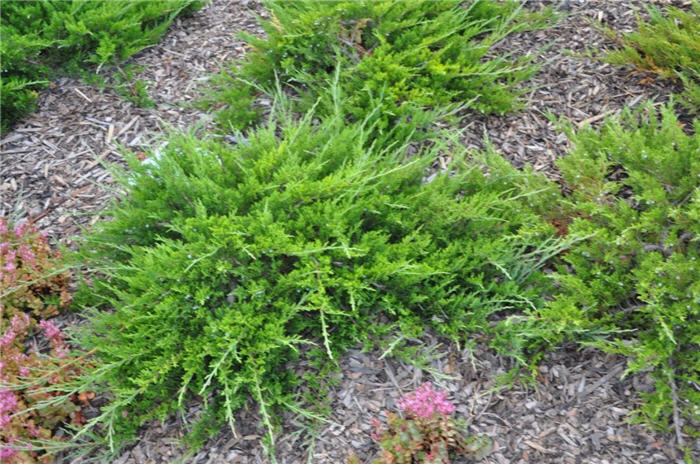| Botanical Name: Juniperus sabina 'Buffalo' | |
| Common Name: Buffalo Juniper |

-
Anatomy
-
Culture
-
Design
Plant Type
Conifer, Shrub, Ground cover
Height Range
Under 1'
Flower Color
n/a
Flower Season
n/a
Leaf Color
Green
Bark Color
Brown
Fruit Color
Purple
Fruit Season
Summer
Sun
Full
Water
Low
Growth Rate
Moderate
Soil Type
Sandy, Clay, Loam, Rocky, Unparticular
Soil Condition
Average, Rich, Poor, Well-drained, Dry
Soil pH
Neutral, Basic
Adverse Factors
n/a
Design Styles
Formal, Japanese, Mediterranean, Ranch, Seascape, Woodland
Accenting Features
n/a
Seasonal Interest
Winter, Spring, Summer, Fall
Location Uses
Entry, Shrub Border, Foundation, Parking Strip, Park, Parking Lot, Raised Planter, With Rocks
Special Uses
Erosion Control, Filler, Mass Planting
Attracts Wildlife
n/a
Information by: Stephanie Duer
Photographer:
Photographer:
-
Description
-
Notes
Buffalo Juniper is a wide-spreading, low-growing, very hardy juniper. It has bright green, feathery foliage, and a softer look that other junipers. Like most junipers, it grows best in full sun and well drained soil. This shrub is great for erosion control, and tolerates the heat of west facing slopes, parking lots, and parkstrips.
Grow in any soil that is well draining, including sandy, gravelly, or clay soils, but they must be well draining. Best growth in full sun. Once established, it tolerates dry soils and heat. Avoid shearing, as that will made the juniper woody and stiff; instead, prune selectively if necessary (see Guides).